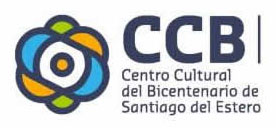AVERIAN CULTURE (LATE PERIOD)
Approximately 1100 A.D. until the first colonial period.
The sites belonging to this period are scattered throughout the plains and beyond.
It is possible that their roots are not within the province, and this is because the decorative features of the pottery reveal Andean connotations and contact with neighbouring cultures.
In many sites, Averías and Sunchituyoj are associated, while in others they are separated, and in later times Averías comes into contact with Hispanic elements.
Researchers who have studied the archaeological cultural problems of Santiago del Estero do not consider Averías and Sunchituyoj as two independent cultures, but as two ceramic complexes belonging to the same cultural tradition, the Chaco-Santiagueña.
CERAMICS: it is manifested in its maximum perfection in terms of form and design. The coloured pieces are painted in more vivid tones than in Sunchituyoj. Three tones are used: red, black and white or cream.
DESIGNS: the main motifs are staggered fretwork, alternating triangles, spirals, linear pennants, circles or concentric figures, anthropomorphic figures, stylised owls, two-headed serpents and other animals that are not well identified. All this decoration is of a high artistic level, with a remarkable capacity for abstraction and synthesis that reveals a mythological system.
Other pieces have been decorated with pastillage in relief with animal, bird and human figures, as well as plain or with surface treatment, bath or engobe.
SHAPES: with a large repertoire, there are numerous shapes; apart from urns and larger vessels, there are plates, cups, jugs, among others.
Anthropomorphic statuettes, small clay figures in flat shapes, some stylised and others modelled, feminine or asexual, are of great importance in terms of craftsmanship, leading us to believe that they are elements of the group’s magical activity.
A large number of the torteros or muyunas (counterweights for the spinning spindle) are engraved, painted and plain, and these constitute irrefutable proof of the intensity of the textile arts. From the analysis of textile remains, it is known that plant and animal fibres were used.
It is important to note that Averías and Sunchituyoj were found in association at several sites, while at other sites, as in the later period, they were found separately.
Averías, in its later period, came into contact with Hispanic elements.


